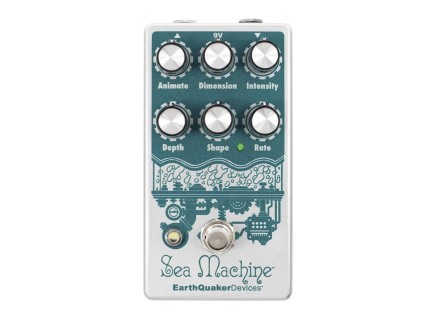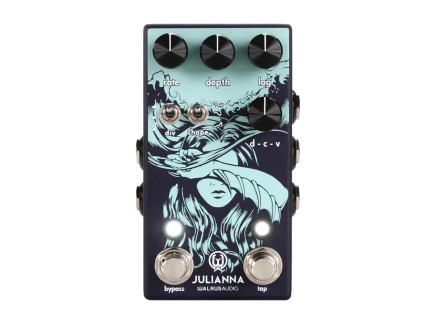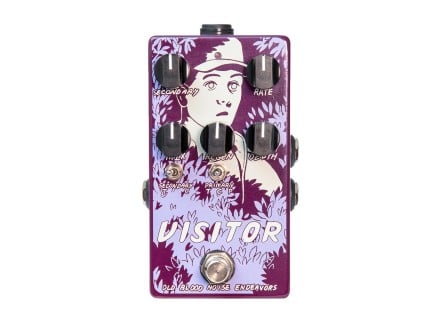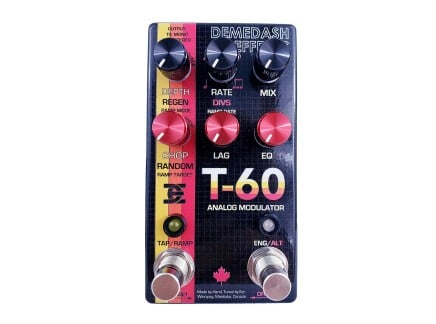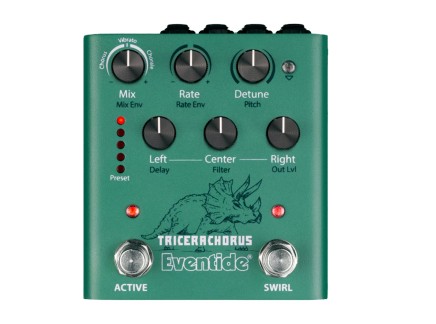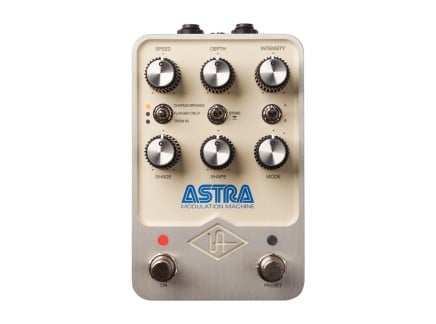Having been raised by parents that came of age in the 1980s, my ears quickly grew accustomed to the sound of watery, chorused guitars. Even when I got into synthesizers, classic instruments like Roland's Juno series and Yamaha's CS-80 featured chorus effects built-in, providing another way to apply lush texture to dramatic pads. But chorus effects have come a long way since these early days, and it should come as no surprise that like a lot of other types of effects, the innovation of the modern pedal scene has pushed what was once a fairly simple and straightforward effect into totally new territories.
There are more options than ever out there, but for my ears and taste, I'm interested in chorus pedals which really push the envelope of convention. From random fluctuations to overly-thick, seasick textures, I've found a few particularly special boxes that all provide what I'm looking for, while still offering their own unique takes on one of my most beloved effects. Check out our video above, where I play through three of my favorite modern chorus pedals, and read on to find out why these are among my top picks.
Earthquaker Devices Sea Machine
Of the three pedals featured in this video and article, Sea Machine from our friends over at Earthquaker Devices is certainly the most immediately bizarre member of the group. This pedal's circuitry contains both analog and digital DNA, which allows it to stretch well beyond the traditional sounds that a chorus pedal is capable of achieving. With moderate settings, it certainly sounds like a regular chorus pedal, but venturing outside of your comfort zone will lead you to some of the magic lurking in its depths.
Much of the Sea Machine's magic lies in the Animate and Dimension controls, for it's these two parameters which most profoundly affect your sonic results. Animate affects the digital pitch-shifting element, which has a much wider range of movement than what a normal chorus could achieve. Meanwhile, Dimension is a macro-style control affecting several other digital parts of the Sea Machine, adding slapback delays, feedback, resonances, and much more. At more adventurous settings, it becomes clear why EQD named this pedal the Sea Machine—the dark modulations as powerful as ocean currents can radically transform your guitar, synth, or other instruments into something totally new.
Another particularly neat thing about the Sea Machine is the Shape control, which transforms the shape of the LFO from a triangle wave into a square. Traditionally, chorus pedals use a triangle waveform for their modulation oscillator, which modifies the pedal's delay time in a cyclical fashion to create the signature, washy sound of a chorus. But by using a square waveform, the abrupt changes in delay times can lead to curious pitch shifting effects that you won't find on most other pedals. When tuned just right with the Depth control, it's possible to unlock pseudo-arpeggiator sounds courtesy of the stepped pitch-shifting that occurs.
Walrus Audio Julianna
If you've followed the modern chorus pedal market recently, chances are you've heard of the Julia from Walrus Audio. It's particularly beloved by those looking for a chorus with a lo-fi character to it, thanks to its unique Lag control and ability to fully and continuously blend between dry and wet signals, creating subtle to lush choruses throughout up to vibrato effects at full wet. Julia was recently updated to its second version, but Walrus Audio clearly had some other ideas while playing around with the layout, because a few months after it was released, we were pleasantly surprised by the appearance of Julianna!
Though it maintains the same character and controls at its core, Julianna expands upon Julia in a number of ways, notably in the fact that it's a stereo pedal. That means synthesizers, dual guitar amp rigs, and countless other possibilities are now opened up to wider imaging and lush modulation. But actually one of my favorite uses for the Julianna is to run the two channels in series, first through the left channel and then back into the right input, which allows for more intense chorusing to occur.
Some other welcome changes include tap tempo for the modulation LFO, and a new random waveform shape. This is a particularly huge addition, as the random fluctuations in delay time are the perfect way to add tape-like wow and flutter embellishments to your signals, especially when used as a fully-wet vibrato effect. Spending a lot of time around modular synthesizers has led to me to have a particular fondness for random voltages, and seeing that idea make its way into pedals is a source of personal joy and excitement.
Old Blood Noise Endeavors Visitor
Rounding out our pedal trio is the Visitor, a multi-modulation pedal from the reigning champions of parallel signal routing, Old Blood Noise Endeavors. Indeed, the Visitor internally consists of two effects in parallel: a primary effect which may operate as a tremolo, chorus, or phaser, and a secondary effect that can be either a tremolo or a chorus. As this article and video are specifically about chorus pedals, we'll focus on those modes in particular, but the other options make this a pedal with worlds of sonic possibilities hiding inside.
In a streamlined interface, Visitor offers more controls for its primary effect, and a single macro control for the other. In this regard, it's possible to set the first effect as desired, and then let go of fine control to impart further depth with the other effect. OBNE were smart in how the Secondary parameter modifies multiple parameters at once, and make it capable of surprisingly varied sounds for something with just one knob to control it. For further interactivity, you can also control the Secondary control with an expression pedal, making it easy to dial things back when required but still have the ability to go all-in for full dramatic effect.
Visitor serves as a nice counterpart to how I like to use the Julianna, in the sense that two pedals can employ choruses that are being routed in different ways. With Julianna, running the effects in series makes a more pronounced effect, especially when using the periodic waveforms as this is similar to increasing the range of the Depth control. Visitor on the other hand has independent modulations happening within its primary and secondary effects, phasing around each other for constantly lush, thick chorusing.
Wibbly Wobbly, Timey Wimey Stuff
After reading a little bit about these pedals, it should come as no surprise that they're capable of things well beyond the traditional conventions of chorus effects. In the article-exclusive bonus clip above, I play through another quick riff with each pedal set to highlight its particular strengths when dialed into more extreme settings. For the Sea Machine, listen as the tides of resonant trails fill the background and spaces between notes. Julianna is set up for random vibrato as described above, cascading through both channels for a more pronounced effect. Finally, the Visitor's secondary chorus control has been maxed out, which turns it into something of a slapback delay alongside the wash of the primary chorus. In a way, the intensity and movement of the sound reminds me of rotary speakers that were popular for electric organs back in the day.
I'm always excited to see how pedal makers are pushing the boundaries of chorus effects. It's truly one of my favorite ways to process sound, whether it be for the thick, chimey clean guitars from the music I love, a simple stereo widener effect, or an all-out transformative sound design tool for pseudo-reverbs and resonances. It's a great time to love pedals, and we're all eagerly looking forward to seeing where things go from here.

